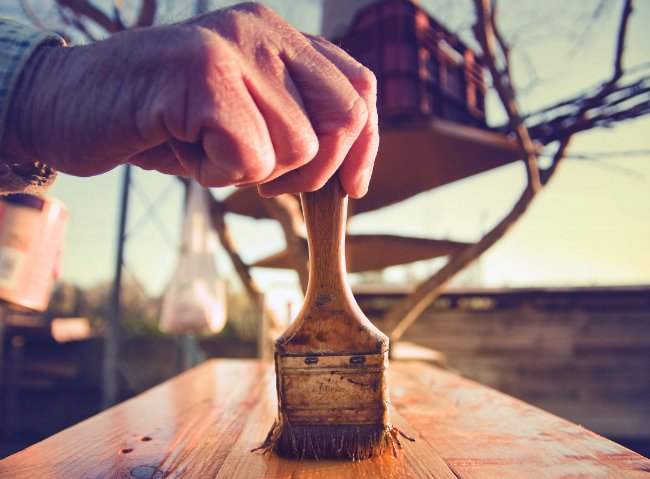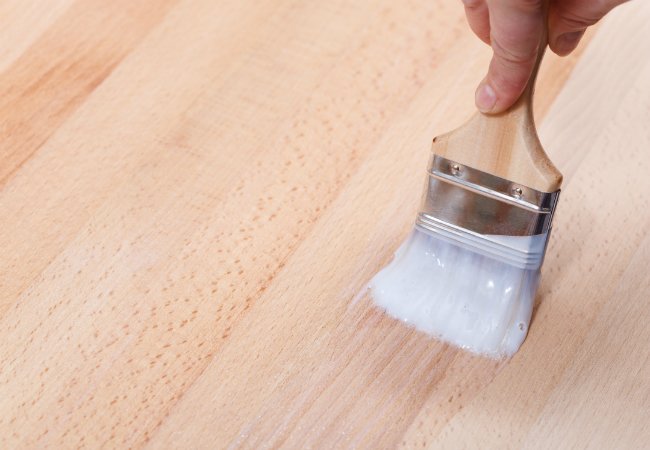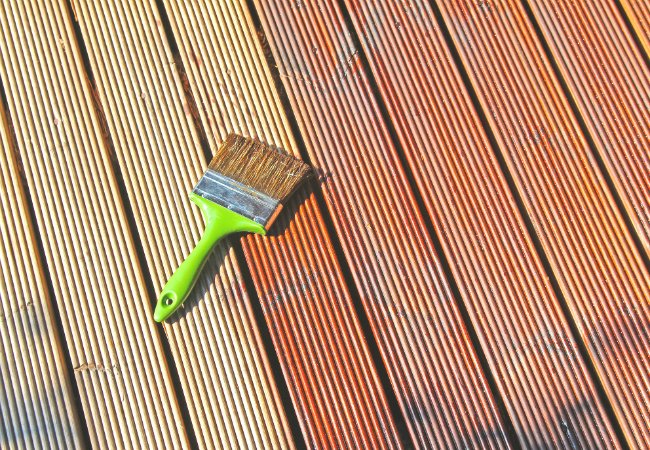

We may earn revenue from the products available on this page and participate in affiliate programs. Learn More ›
A coat of durable wood finish on your hardwood floors, fine furniture, and outdoor decking can mean the difference between a long, lustrous lifespan and one cut short by the passage of time and exposure to the elements. Given the unattractive consequences of poorly protected wood surfaces and the annoyance of frequent refinishing, it’s smart to do your homework first to ensure that you’re doing your best to preserve these valuable features.
Polyurethane and traditional varnish are two popular finishes that cure into durable protective coats when applied. But although they’re often referred to interchangeably, each one has distinct uses and offers varying levels of protection from environmental elements
. Up your woodworking IQ and learn which product is best suited for your next project, so you’ll be able to attain the perfect protection from start to finish (pun intended).

Polyurethane
Polyurethane is like a liquid plastic, often either a pure synthetic plastic or a blend with resin. There’s an option for everyone: DIYers have the choice of a water- or oil-based resin (and one in between) as well as sheens from flat to satin to glossy. Despite its sometimes milky appearance in the can, polyurethane goes on clear and—in just one or two coats—cures into a scratch- and abrasion-proof hard plastic that is versatile enough for most indoor projects.
Best Uses
With so many options, how can you pick the right polyurethane for the job? The choice of sheen, from glossy to something more flat, comes down to personal preference, but there are certainly common usages where one is preferable to another. Review these guidelines before making your final selection at the home improvement store.
- Completely clear when dry, water-based polyurethane is ideal for indoor use, on pieces like nightstands, desks, photo frames, and coat racks that already have a stunning natural hue and simply need a revitalizing finish. Perhaps its biggest selling points, however, are that it’s lower in toxicity than its counterparts and requires only soap and water for cleanup.
- Often used to finish hardwood floors, the newer water-based oil-modified polyurethane lends a more robust level of protection than traditional water-based poly. However, any water-based polyurethane is more susceptible to cracking from heat and UV damage, so intricate wood carvings or surfaces that will be exposed to the outdoors may be better protected by an oil-based product.
- Finally, more heat-tolerant but also higher in toxicity, oil-based polyurethane goes on with a subtle amber tint that can beautifully enhance the underlying wooden tones of kitchen tables, bar tops, and cutting surfaces.
Application
The process of applying polyurethane varies depending on the product’s base.
- Fast-drying water-based polyurethane and its newer water-based oil-modified cousin can be applied with a fine-bristle brush, foam roller, spray, or rag. If applying over an oil-based stain, rough up the stain with a little bit of steel wool so the new coat of polyurethane will adhere better. Also, keep in mind that the more watery the polyurethane, the thinner it is—and the more coats it will require.
- Oil-based polyurethane uses similar methods: a natural-bristle brush, a spray can for larger projects, or a rag for an elegant, hand-rubbed finish. While any polyurethane application requires an open window and good ventilation, because this particular category of finish is higher in VOCs, when you’re applying it indoors you should use a respirator and ensure that the surrounding area remain well-ventilated throughout the lengthier drying time.

Varnish
You may have heard varnish used as a generic term for any finish, but traditional varnish describes an older form of finish that contains alkyd resin, oil, and solvents. When applied to wooden surfaces indoors or out, varnish cures into a thin and glossy film with a faint yellow or amber tint, similar to the finish achieved with oil-based polyurethane.
Best Uses
The high solid content and water resistance of varnish make it particularly apt for use on water-exposed outdoor decks, deck chairs, and boats. Its low toxicity, however, means that it’s equally safe to use near the entryway on exterior doors and trim. A variant of varnish known as spar or marine varnish offers both UV protection and flexibility, which makes it a favorite among DIY woodworkers, who can confidently apply it to soft woods like pine that bend under extreme conditions.
Application
Despite its ability to serve as a wood sunblock, it’s not all sunny when it comes to varnish. If varnish is not applied correctly or dried completely, it can peel, crack, or form bubbles that leave wood more susceptible to environmental damage. For optimal results, apply varnish in several layers using a natural-bristle brush. Then, allow this traditionally slow-drying finish to sit for at least six hours under fair weather conditions to give your wood surfaces a photo finish!
